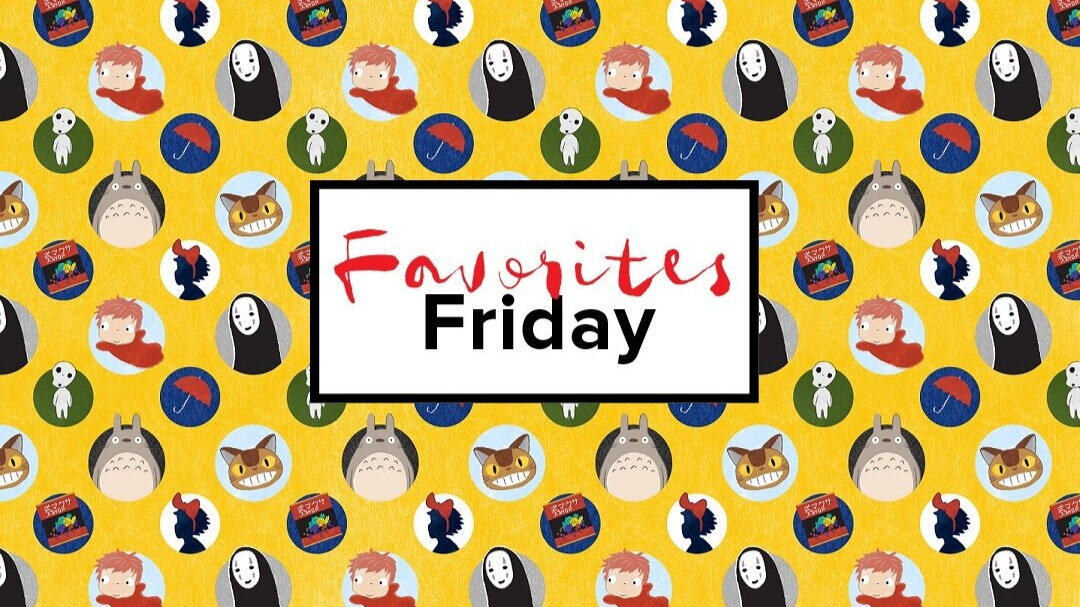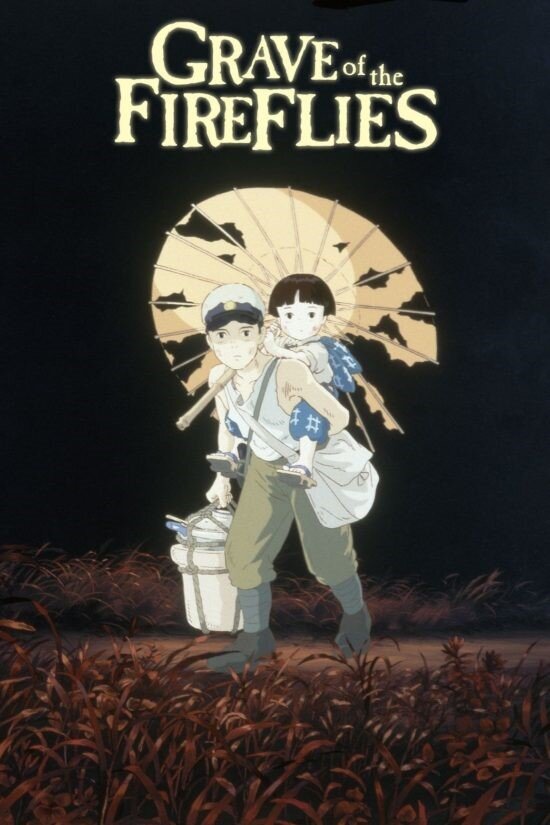April 1st brought the last wave of a 21-film list of features from the catalogue of beloved Japanese animation house Studio Ghibli to Netflix for all regions outside the US, Canada and Japan.
While we in the US will have to wait until May to stream Ghibli films on HBO Max, GKIDS, the acclaimed producer and distributor of animation, has released the Ghibli catalogue for digital download-to-own. Films are available to purchase in both English and Japanese languages on all major digital transactional platforms, including Amazon Prime Video, Apple TV, FandangoNow, Google Play Store, Microsoft, Sony PlayStation Movies, and Vudu.
We can also watch the four-part "10 Years with Hayao Miyazaki” documentary for FREE courtesy of Japanese national broadcaster NHK. Click here to follow the creative process of the legendary filmmaker.
The underlying spirit of childhood innocence and nostalgia that permeates all Ghibli films serves as magical reminder that there is always hope. A sentiment that is more vital now that ever.
So for this week’s “FRIDAY FAVORITES,” the JASH team is sharing our top Studio Ghibli film picks.
Grave of the Fireflies | 火垂るの墓 (Hotaru No Haka)
My Neighbor Totoro | となりのトトロ (Tonari No Totoro)
Nausicaä of the Valley of the Wind | 風の谷のナウシカ (Kaze No Tani No Nausicaa)
Pom Poko | 平成狸合戦ぽんぽこ (Heisei Tanuki Gassen PonPoko)
Princess Mononoke | もののけ姫 (Mononoke Hime)
Spirited Away | 千と千尋の神隠し (Sen To Chihiro No Kamikakushi)
Enjoy our favorite Studio Ghibli films as you head into the weekend, and read staff comments below for reasons behind the picks.
IKUYO
Nausicaä of the Valley of the Wind
(風の谷のナウシカ) (1984)
by Hayao Miyazaki
A thousand years after the Seven Days of Fire destroyed civilization, warring human factions survive in a world devastated by atmospheric poisons and swarming with gigantic insects. The peaceful Valley of the Wind is nestled on the edge of the Toxic Forest and led by the courageous Princess Nausicaä, whose love of all living things leads her into terrible danger, as she fights to restore balance between humans and nature. - from GKIDS
This is the first Ghibli movie I watched and I still remember the excitement I had at that time. I was not a person who was enthusiastic about anime and manga. The first impression I had was it’s difficult to understand because of the philosophical theme. The anime and manga I had seen before was more fun and playful type of entertainment. However, this movie made me think a lot about the relationship between human beings and nature.
Recently, I watched the movie again, and my original impression has remained unchanged. The film still tells us fundamentally important things: show respect to elderly people, take care of children, recognize the value of family, neighbors, communities and helping each other, respect foreign people and their cultures, the human is one of the element of the mother Earth, and live as a part of nature bring benefits to us.
KEIKO
POM POKO
(平成狸合戦ぽんぽこ) (1994)
by Isao Takahata
The tanuki (raccoon-dogs) spend their days playing idly in the hillsides and squabbling over food – until the construction of a huge new Tokyo suburb clears the nearby forest and threatens their way of life. In an effort to defend their home, the tanuki learn to transform into humans and start playing tricks to make the workers think the construction site is haunted, ending in a spectacular night-time spirit parade, with thousands of ghosts, dragons and other magical creatures descending on the city. - from GKIDS
Pom Poko is said to be based on a real story about development in Tokyo in the 1960s. I used to live in the area where the movie takes place so I have especially strong feelings for this movie.
Through this story, I was able to learn the history of the area, and I had the chance to see the scenery before modern development. This movie also gave me a chance to think about the effects of development projects on nature and animals. I think that one of the key features of this movie was that the main characters are “tanuki” and the audience sees them portrayed differently as both insiders and outsiders of the community.
This contrast main focus: it is not a fantasy movie and we have to think about real world.
LAUREN
Princess Mononoke
(もののけ姫) (1997)
by Hayao Miyazaki
Inflicted with a deadly curse, the young warrior Ashitaka heads west in search of a cure. There, he stumbles into a bitter conflict between Lady Eboshi, the proud people of Iron Town, and the enigmatic Princess Mononoke, a young girl raised by wolves, who will stop at nothing to prevent the humans from destroying her home and the forest spirits and animal gods who live there. - from GKIDS
Not only are the music score and artwork phenomenal, but there are also several themes throughout the movie that I think are important.
Like many Ghibli films, there is an underlying theme of resolving conflict, not because it was your fault, but because it was your responsibility. Ashitaka and San (aka Princess Mononoke) work together to bridge the misunderstandings of the humans and the creatures of the forest while setting an example for the other humans to follow.
Additionally, many of the most skilled members of the Iron Town settlement have leprosy, but they are cared for and depended upon by the community. This fits in with the theme of ableism vs worth. Many societies, especially in the time period that Princess Mononoke portrays, would not put much value into the life or worth of a terminally ill group.
The care and protection of the environment vs human industrialization. At what point does human industry and settlement need to be stopped so that the environment can heal and survive?
Gender role reversals. With the exception of Ashitaka, Gonza the bodyguard, and Jiko-bo the monk, the male characters hold supporting roles in the community. The women of Iron Town perform most of the hard labor; Lady Eboshi who is a confident and independent woman is the head of the settlement and there is of course San who seems to be a law unto herself. It was interesting to see the males that would often display softer emotions as well as being supportive of their particular roles in their society.
MEGUMI
Grave of the Fireflies
(火垂るの墓) (1988)
by Isao Takahata
As the Empire of the Sun crumbles upon itself and a rain of firebombs falls upon Japan, the final death march of a nation is echoed in millions of smaller tragedies. This is the story of Seita and his younger sister Setsuko, two children born at the wrong time, in the wrong place, and now cast adrift in a world that lacks not the care to shelter them, but simply the resources. Forced to fend for themselves in the aftermath of fires that swept entire cities from the face of the earth, their doomed struggle is both a tribute to the human spirit and the stuff of nightmares. Beautiful, yet at times brutal and horrifying. - from GKIDS
This is a sad yet touching movie. I would recommend this, as watching a tear-jerker movie. Crying is one of the best ways to relieve our stay-at-home stress!!
MIDORI
My Neighbor TORORO
(となりのトトロ) (1988)
by Hayao Miyazaki
When Satsuki and her sister Mei move with their father to a new home in the countryside, they find country life is not as simple as it seems. They soon discover that the house and nearby woods are full of strange and delightful creatures, including a gigantic but gentle forest spirit called Totoro, who can only be seen by children. Totoro and his friends introduce the girls to a series of adventures, including a ride aboard the extraordinary Cat Bus. - from GKIDS
The setting at the beginning is bitter-sweet because the little sisters are not able to live with their sick mother, but it ends on a positive note. A feel-good film, the movie is filled with a positive atmosphere from beginning to end and no evil characters appear.
The local community, including the spirits like Totoro and Cat Bus, embraces the new-comer family, watches the girls grow, and helps when necessary. I get a feeling of exhilaration when I hear the music that is played when the girls explore the vicinity around the camphor trees guided by the Totoro family at midnight.
PATSY
SPIRITED AWAY
(千と千尋の神隠し) (2001)
by Hayao Miyazaki
Chihiro’s family is moving to a new house, but when they stop on the way to explore an abandoned village, her parents undergo a mysterious transformation and Chihiro is whisked into a world of fantastic spirits ruled over by the sorceress Yubaba. Put to work in a magical bathhouse for spirits and demons, Chihiro must use all her wits to survive in this strange new place, find a way to free her parents and return to the normal world. Overflowing with imaginative creatures and thrilling storytelling, Spirited Away became a worldwide smash hit, and is one of the most critically-acclaimed films of all time. - from GKIDS
“Spirited Away” was the first Miyazaki film that I had the pleasure of watching on the big screen. The movie’s release in Japan coincided closely with the start of my new life as an Assistant Language Teacher (ALT) on the Japan Exchange and Teaching Program (JET) in a small mountain village. As the movie followed the path of young heroine Chihiro’s emotions and feeling, I found myself identifying with her. Impatient and impetuous. Befriended by some. Shunned by others. Learning as she goes. Spirited and determined. Ultimately, the story, in all its weirdness and wonderfulness, was, for me, one that celebrated the power of perseverance.
It also served as a refreshing reminder that success can be found in staying true to joy and astonishment and empathy. After all, “Spirited Away” won the 75th Academy Award Winner for Best Animated Feature.







